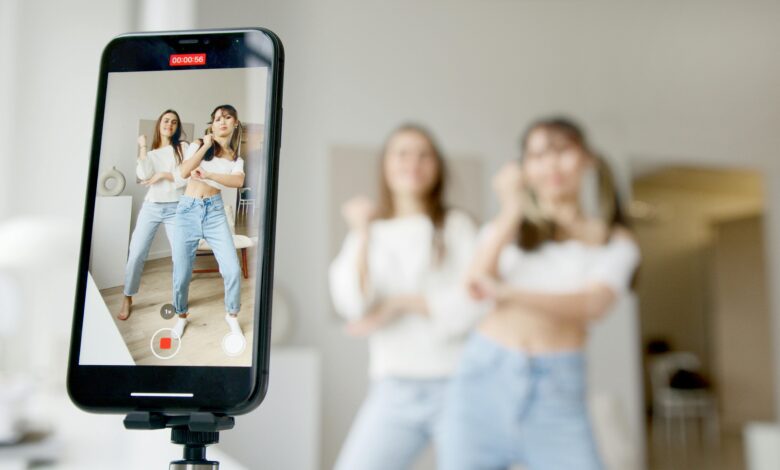
Influencer marketing has become one of the most dynamic areas of modern brand building. It can connect products to audiences through trusted personalities, turning creators into cultural powerhouses. With many big brands now prioritising social-first campaigns within their annual budgets, the marketing industry is shifting, and fast.
And with generative AI evolving at a pace, as with many other sectors and disciplines, it promises to streamline the practice of influencer marketing. For marketers, the possibilities may seem like a no-brainer; algorithms can scan millions of profiles to identify rising creators, generate first-draft briefs in seconds, and automate campaign reporting, for example. And with the global influencer marketing market expected to grow to US$121.81 billion by 2030, AI appears to offer scale, speed, and efficiency just as demand peaks.
But beyond the hype lies the question of the moment: will AI make influencer marketing stronger, or does it risk eroding the very qualities that made it valuable in the first place?
Automation without judgment erodes trust
The appeal of automation is obvious, and many marketing professionals will be putting it into practice now. Many agencies and in-house teams are under pressure to do more with fewer people, and AI is already filling some of those gaps. Campaign cycles are speeding up, and the industry is growing – and marketers have more tools than ever to identify, brief, and measure creators at scale.
The problem is that influencer marketing is not simply a procurement exercise. It is a discipline built on fit, tone, and credibility. And those elements are harder for AI to replicate.
When it comes to creator selection, algorithms can certainly flag influencers with impressive engagement numbers. What they cannot always tell, however, is whether that engagement is meaningful and reflects genuine interest, or is driven by sarcasm, off-brand commentary, or outright criticism. AI doesn’t understand irony; a creator may look strong on paper, yet the tone of their audience could be completely off-brand.
The same applies to briefing. An AI-generated outline can neatly cover product details and campaign requirements, but it rarely captures the nuance or creative spark that motivates a creator to produce content their audience actually believes.
Meanwhile, reporting dashboards can deliver flawless figures on impressions and reach, yet they often miss subtleties like audience eyerolls, coded jokes, or the faint but telling signs of discontent when a campaign feels too contrived.
Adopt a hybrid model with AI as an amplifier
The risk is that marketers mistake automation for strategy. But the solution is not to resist AI; it is to use it with intent. For example, AI already excels at discovery, narrowing the field from millions of potential creators to a manageable shortlist. But human judgement is still needed to stress-test the choices, checking for alignment with brand voice, cultural context, and the subtleties of audience nuance that machines cannot fully grasp.
The same balance applies to briefing. Automation can be useful for structuring information and ensuring consistency across campaigns, but the final brief should always be crafted with the creator’s individuality in mind.
And when it comes to measurement, AI can flag anomalies, track sentiment shifts, and highlight emerging patterns at speed. But human analysis is still required to interpret why a post resonated – or fell flat.
Adopting this hybrid approach turns AI into an amplifier rather than a substitute, freeing teams to spend more time on strategy, creativity and relationship-building. And if they don’t? Well, if brands allow AI to set the tone of influencer marketing unchecked, the consequences could be serious.
One such risk is commoditisation. If creators are treated as interchangeable data points rather than partners with distinct voices, they will eventually push back – and their audiences will be the first to notice.
Another danger is homogenisation. As briefs and outputs converge on machine-generated templates, campaigns could begin to blur into one another, losing the originality that gives influencer marketing its edge.
But arguably the most serious consequence could be a complete erosion of trust. Audiences are quick to detect when content feels manufactured or insincere. Once influencer marketing starts to look inauthentic, its impact diminishes rapidly, and the credibility of the entire discipline is put at risk.
Keep it culture first
The bottom line is that the AI revolution in influencer marketing is inevitable. The tools are powerful, and the commercial pressures are strong. The real turning point for the industry will be whether it applies AI strategically, to enhance insight, precision and efficiency, or tactically, in ways that risk undermining creativity and trust.
Influencer marketing has always been about more than exposure; it is about shaping culture, sparking conversation, and embedding brands in communities. AI should be used to make those outcomes sharper – not to reduce them to metrics on a dashboard.





